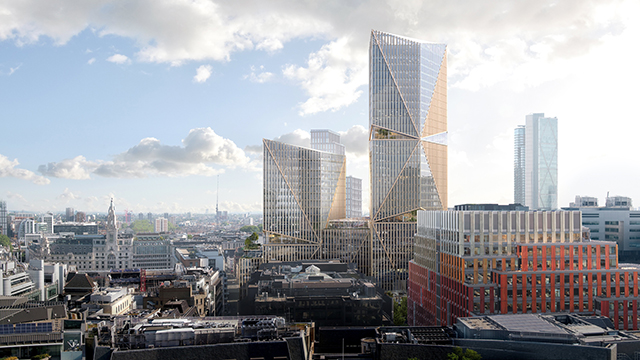Telecommunications – Electronic communications code – Code rights – Compensation – Claimant infrastructure provider seeking new lease under Electronic communications code – Reference made to Upper Tribunal for determination of terms not agreed – Whether equipment and sharing rights limited to test in paragraph 17 of Code – What consideration payable by claimant to respondent freeholder – Reference determined accordingly
The claimant was a wholesale infrastructure provider which provided masts, cabinets and other equipment for the use of mobile network operators. Its equipment was inert or passive and the network operators’ equipment, such as fibre and antennae, brought it to life and created electronic communications networks.
The claimant had a telecommunications mast and other equipment on a small woodland site on the Dale Park Estate, Madehurst, Arundel, West Sussex, within the South Downs National Park, pursuant to a lease granted in 1999. The estate comprising residential and agricultural buildings.
The lease expired in March 2019, and the claimant sought a new lease under part 5 of schedule 3A to the Communications Act 2003 (the Code) which enabled infrastructure providers, as well as network operators, to acquire code rights provided that they were designated as “code operators” under section 106 of the 2003 Act. The claimant had been so designated.
The respondent, as the freehold owner of the site, did not object to the grant of a new lease. However, a number of its terms had not been agreed and a reference was made under schedule 3A to the 2003 Act to the Upper Tribunal to determine: (i) whether equipment and sharing rights ought to be limited to the test under paragraph 17 of the Code; and (ii) the consideration payable by the claimant to the respondent.
Held: The reference was determined accordingly.
(1) The tribunal had a discretion to confer a code right on the claimant provided that the conditions in paragraph 21 were met. The prejudice it would cause to the respondent had to be able to be compensated by money (paragraph 21(2)); and the prejudice had to be outweighed by the public benefit, bearing in mind the public interest in access to a choice of high-quality electronic communications services (paragraph 21(3)).
Paragraph 23(5) further required the tribunal to include appropriate terms to ensure the least possible loss and damage to the respondent and others on the land from time to time. That would include terms as to consideration assessed under paragraph 24 and rights to compensation for loss and damage under paragraphs 25, 44 and 84: Cornerstone Telecommunications Infrastructure Ltd v London & Quadrant Housing Trust [2020] UKUT 282 (LC); [2020] PLSCS 187 followed.
In the present case, the claimant’s evidence of public benefit was unchallenged and there was no basis for concluding that it was outweighed by the limited prejudice to the respondent. Moreover, that prejudice could be compensated by money. The conditions in paragraph 21 were met and there were ample protections for the respondent in the agreement, combined with the control exercised by the local planning authority and the extra protection afforded in the national park: Cornerstone Telecommunications Infrastructure Ltd v Compton Beauchamp [2019] EWCA Civ 1755; [2019] PLSCS 201 considered.
(2) By paragraph 17 of the Code, an operator might share the use of ECA with another operator subject to the condition that any resulting changes to the ECA had minimal adverse impact on its appearance; and that the upgrading or sharing imposed no additional burden on the other party.
In the present case, without the ability to share the claimant could not fulfil its statutory purpose. As a neutral host it needed an unrestricted right to share; there was no case for restricting that right. The agreement, and planning law, provided the protection that the respondent needed from the nuisance and disturbance that could realistically be anticipated. The agreement would confer on the claimant an unrestricted right to share the site.
(3) In London & Quadrant Housing Trust, the tribunal described the three steps to assessing the level of consideration.
The first stage was to assess the alternative use value of the site, which would be the rental value of its current use or the most valuable non-network use. That was a matter of evidence and would depend entirely on location and land values. An allowance should be made to reflect any additional benefits conferred on the tenant by the letting. The Code did not require an assumption of vacant possession. Moreover, the tribunal was not required to depart from the reality that the site had planning permission, pre-existing supplies of electricity and fibre, concrete foundations and a secure perimeter fence. The experts agreed that the alternative use value was £100 per annum: EE Ltd and Hutchison 3G Ltd v Islington London Borough Council [2019] UKUT 53 (LC) and Vodafone Ltd v Hanover Capital Ltd [2020] EW Misc 18 (CC); [2020] EGLR 35 considered.
The second stage was an allowance for any additional benefits conferred on the willing tenant, over and above that alternative use value. In this case, that included the rights to keep there the existing mast or other tall structure, to maintain connections to an electricity supply, to enter onto the other land of the landlord (for temporary works or to install an emergency generator) and to prune or trim the landlord’s trees. There was also the benefit of the tenant’s rolling break clause after five years. The sum of £600 per annum would be allowed.
The third stage required adjustment for any adverse effect on the willing lessor, over and above the alternative use, created by the letting. At the present site, the right of access, together with the known future replacement of the mast, had the potential to cause adverse effects on the respondent. The grant of unrestricted rights to share the ECA widened the scope of operators and contractors who would make use of the access rights with the potential for conflict of use with others on the estate.
The special circumstances of this site, being a rural site but with dwellings in close proximity, gave rise to burdens valued at £500.
(4) There was no claim for compensation apart from the usual claim for legal and valuation fees incurred by the respondent outside the litigation, which the claimant accepted were payable. Accordingly, the claimant should pay £1,200 per annum by way of consideration (which included an element of compensation).
Oliver Radley-Gardner (instructed by Pinsent Masons LLP) appeared for the claimant; Kirk Reynolds QC and Fern Schofield (instructed by Eversheds Sutherland (International) LLP) appeared for the respondent.
Eileen O’Grady, barrister
Click here to read a transcript of On Tower UK Ltd v JH & FW Green Ltd








